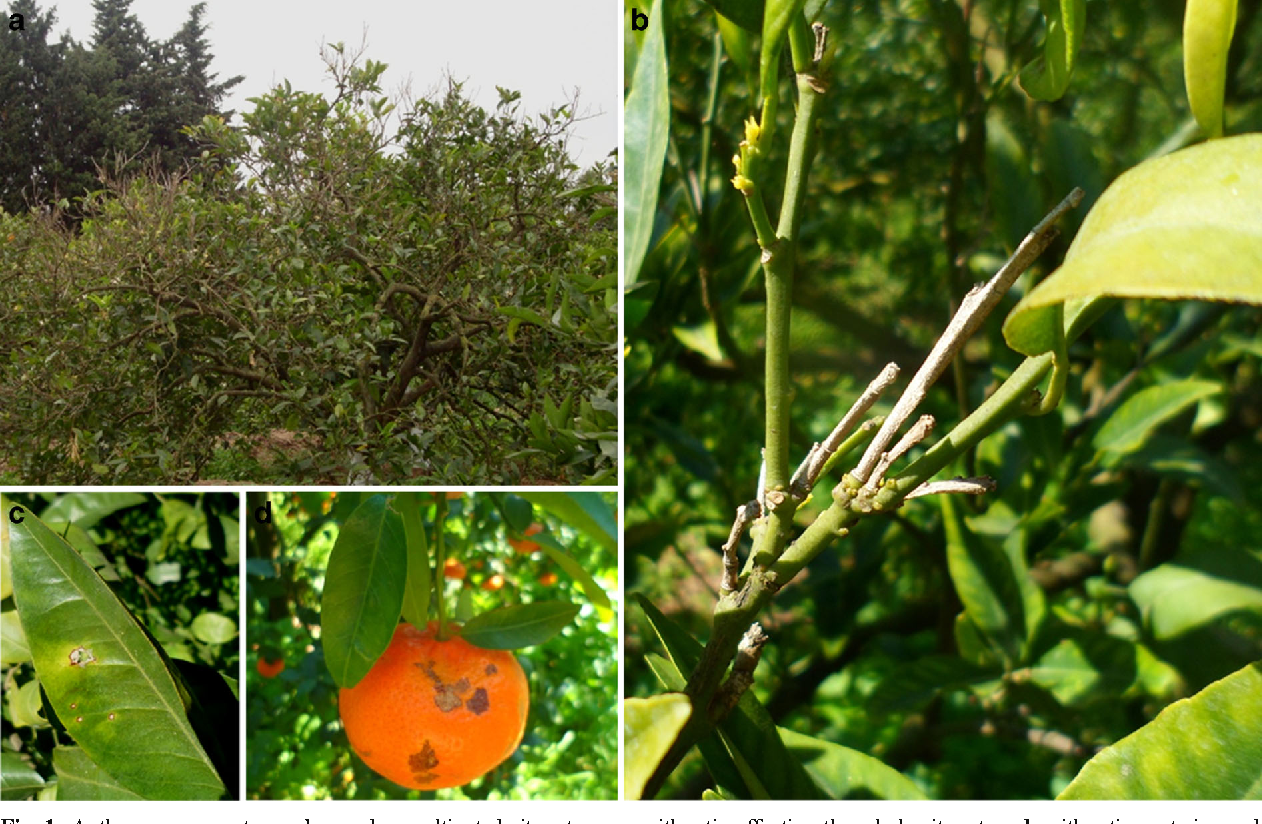
Citrus Withertip
History and Importance:
Etiology:
Causal organism: Colletotrichum gloeosporides
Symptoms:
- Shedding of leaves and die back of twigs.
- Dead twigs give silvery appearance.
- Reddish brown stain (color) on fruit rind*(outer skin of fruit).
Disease cycle:
- Infected twigs and branches are source of infection.
- Spores spread through air to new plantation.
- Wounds provide the entry points for the pathogen.
Epidemiology:
- Temperature 22-26°C
- High relative humidity
Management:
- Pruning of infected twigs and branches followed by spray of fungicides.
- Bordeaux paste at 1:2:12, i.e. 1 kg of copper sulphate and 2 kg of lime mixed in 12 litres of water.
- Spray of 0.33% prenox.
- Spray copper based fungicides e.g. copper oxychloride 3 ml per litre of water starting in July and repeat twice with an interval of 21 days. Difenoconazole 3ml per litre of water also show good results.
- Avoid overhead irrigation
Download Files
Course Material
- Stem or Black Rust of Wheat
- Leaf or Brown Rust of Wheat
- Yellow or Stripe Rust of Wheat
- Brown Leaf Spot of Rice:
- Rice Blast
- Foot Rot (Bakanae Disease of Rice)
- Early Blight of Potato:
- Late Blight of Potato:
- Red Rot of Sugarcane:
- Tree Decline:
- Citrus Withertip
- Powdery Mildew of Mango
- Gram Blight
- Wheat Smut
- Old Bunt of Wheat
- New Bunt of Wheat (Karnal Bunt of Wheat)
- Difference between old and new bunt
- Principals of Plant Disease Management
- Exercise 1
- Exercise 2
- Exercise 3
- Exercise 4
- Exercise 5
- Exercise 6
- Exercise 7
- Exercise 8
- Exercise 9
- Exercise 10
- Exercise 11
- Exercise 12
- Exercise 13
- Exercise 14
- Exercise 15
- Chapters 33
- Department College of Agriculture
- Teacher
Dr. Muhammad Ahmad Zeshan


